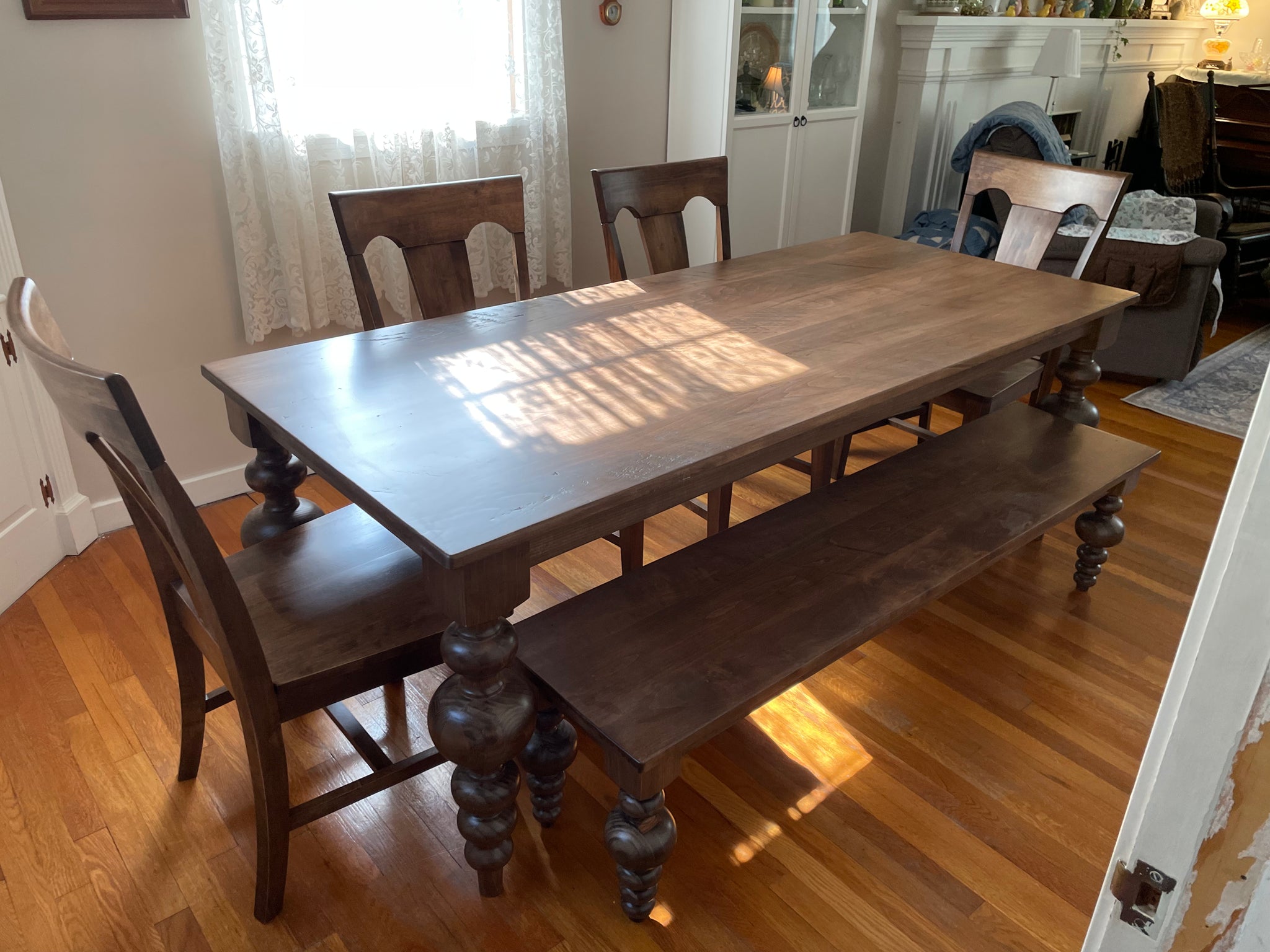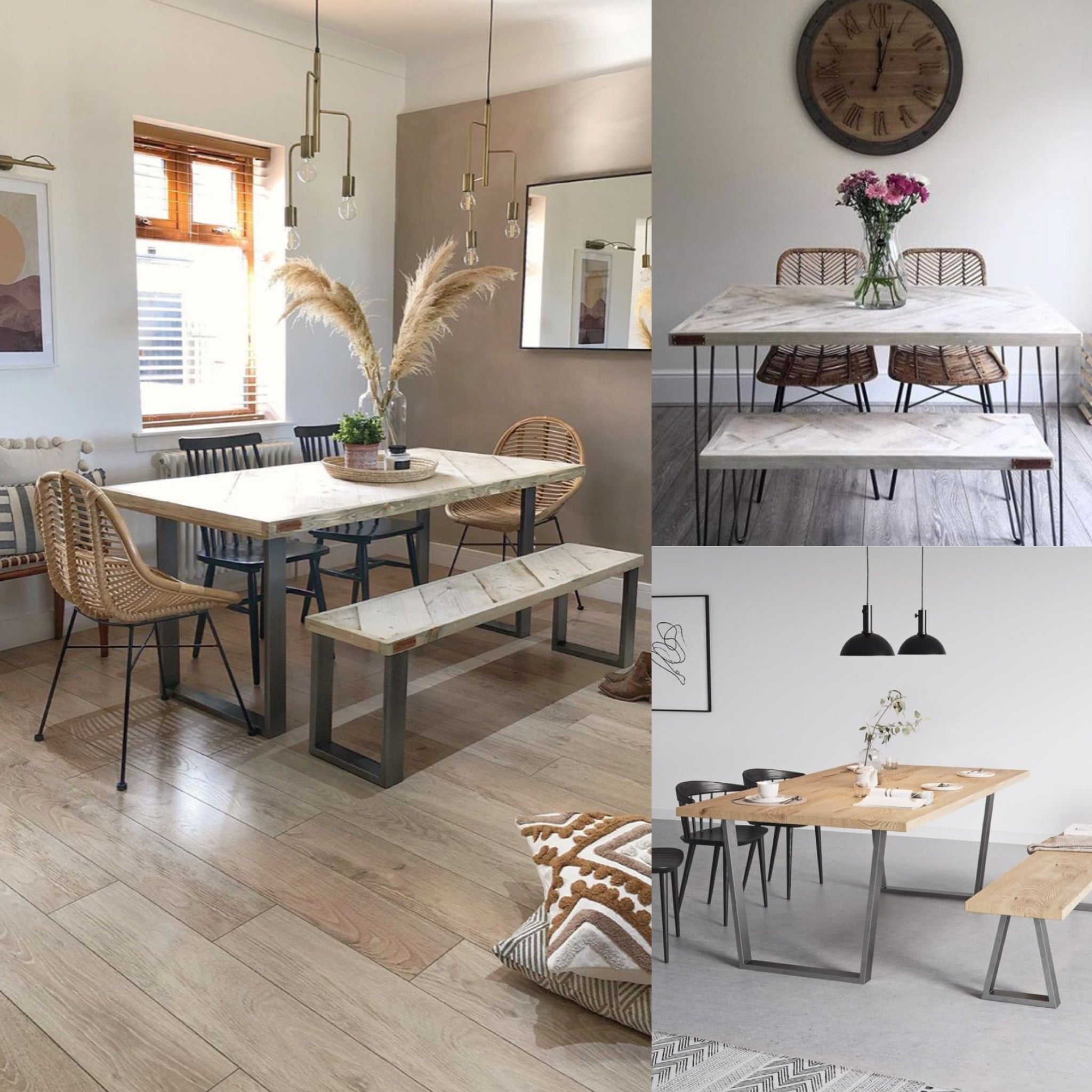How to Choose the Perfect Dining Room Table Legs for Your Home
How to Choose the Perfect Dining Room Table Legs for Your Home
Blog Article
From Standard to Modern: Locate the Perfect Dining Room Table Legs for Your Design
The option of dining-room table legs plays a critical role in defining the general personality of your space, connecting the gap between standard workmanship and modern aesthetic appeals. While traditional layouts such as cabriole and turned legs evoke a sense of classic refinement, contemporary styles like hairpin and geometric options provide a possibility for striking visual interest. Reviewing the right equilibrium between these styles needs a nuanced understanding of your existing design and individual preference. As you consider these components, the question remains: exactly how can you perfectly incorporate these varied leg designs to develop a harmonious eating experience?
Understanding Table Leg Styles
The range of dining-room table leg styles can dramatically influence both the appearances and performance of the area. Each leg design adds distinct sensible features and aesthetic components, accommodating varied style choices and usage requirements. Recognizing these designs is essential for picking the appropriate table that straightens with your general interior style vision.
For example, tapered legs supply a tidy, traditional look that can boost a space's beauty, while stand bases supply security and take full advantage of legroom, making them perfect for smaller spaces. Barrette legs, a characteristic of mid-century modern layout, present a commercial style, permitting a ventilated, open feel. Trestle legs evoke rustic appeal, offering robust support and a sense of timelessness.
Wood legs can bring warmth and texture, whereas steel alternatives commonly communicate a sleek, modern ambiance. Eventually, recognizing table leg styles is necessary for developing a natural eating location that shows personal design while guaranteeing practicality and comfort.
Standard Table Leg Options
When selecting dining-room table legs, standard choices usually embody classic style and craftsmanship. These designs reflect an abundant heritage and a dedication to top quality, making them optimal for those that appreciate classic aesthetics.
One of the most legendary conventional leg styles is the cabriole leg, characterized by its graceful rounded shape. This layout commonly includes attractive carvings and is most frequently located in Queen Anne and Chippendale furnishings. An additional popular option is the turned leg, which boasts a series of smooth, rounded shapes that give a traditional look while maintaining security.
Moreover, the straight leg, while straightforward, supplies a basic and sturdy structure that can blend seamlessly with a range of tabletop designs. For those attracted to ornate detailing, claw-and-ball feet legs evoke a feeling of majesty and can act as a magnificent focal point in any type of dining room.
Last but not least, stand bases, although not strictly legs, provide an alternative typical option that enables adequate legroom and can be wonderfully carved. Each of these standard leg designs adds to the general setting of a dining-room, marrying feature with aesthetic allure.

Modern Table Leg Styles
Modern table leg layouts provide a diverse variety of styles that stress cutting-edge products and clean lines. These designs frequently prioritize capability while working as striking prime focus within an eating space. Minimalist aesthetics are prevalent, with legs crafted from materials such as steel, glass, and crafted go now timber, which add to a contemporary and airy feel.
One popular design is the hairpin leg, characterized by its slim, conical framework that supplies stability without overwhelming the table top (dining room table legs). This style is usually located in mid-century contemporary furnishings and can easily complement different table forms. One more pattern is making use of geometric forms, where legs may handle angular or unbalanced forms, including visual rate of interest and a touch of creativity

Mixing Styles for One-of-a-kind Rooms
Frequently, home owners look for to develop one-of-a-kind eating rooms that reflect their personal style by mixing different layout elements. This method enables the unification of diverse visual appeals, resulting in a harmonious yet distinctive atmosphere. Matching a reference rustic wooden table with sleek, contemporary metal legs can produce an attractive contrast that boosts the area's overall appeal.
Additionally, incorporating vintage table legs with modern table tops can evoke a sense of history while keeping a modern perceptiveness. Such combinations not just showcase individual preference but additionally urge imagination, allowing homeowners to curate a room that really feels both individual and inviting.
Color plays an essential duty in this mixing process; choosing table legs that match or contrast with the existing color pattern can boost visual passion. Whitewashed legs can soften the daring of a dark table surface, developing a well balanced aesthetic.
Tips for Selecting the Right Legs
Picking the right table legs is vital for achieving both performance and visual allure in your eating space. Begin by taking into consideration the general style of your area. Standard settings gain from legs that feature elaborate makings or turned layouts, while contemporary rooms may require smooth, minimalist designs.
Following, assess the elevation and stability of the legs. dining room table legs. Basic dining tables range between 28 to 30 inches in elevation, so make sure the legs complement this dimension for this contact form comfort. Additionally, durable materials, such as wood or metal, can improve security and longevity
Assess the leg form as well-- alternatives consist of directly, tapered, or stand designs. Straight legs offer a traditional appearance, while conical legs can add a touch of sophistication. Pedestal bases provide ample legroom and are optimal for smaller sized spaces.
Final Thought
In summary, selecting the optimal dining-room table legs requires mindful factor to consider of both conventional and contemporary designs. Standard options such as cabriole and transformed legs supply classic elegance, while modern styles like barrette and geometric forms offer a modern touch. By harmonizing leg design, elevation, and material with the general design, a natural and inviting ambience can be achieved. Inevitably, the picked table legs need to mirror the preferred aesthetic, boosting the dining experience within the space.
The range of dining room table leg styles can considerably influence both the appearances and functionality of the area. Ultimately, comprehending table leg designs is crucial for developing a cohesive eating area that mirrors personal design while guaranteeing usefulness and comfort.One of the most famous traditional leg styles is the cabriole leg, defined by its graceful curved form. Straight legs use a traditional appearance, while conical legs can include a touch of style.In summary, selecting the optimal dining area table legs requires careful factor to consider of both conventional and modern-day styles.
Report this page